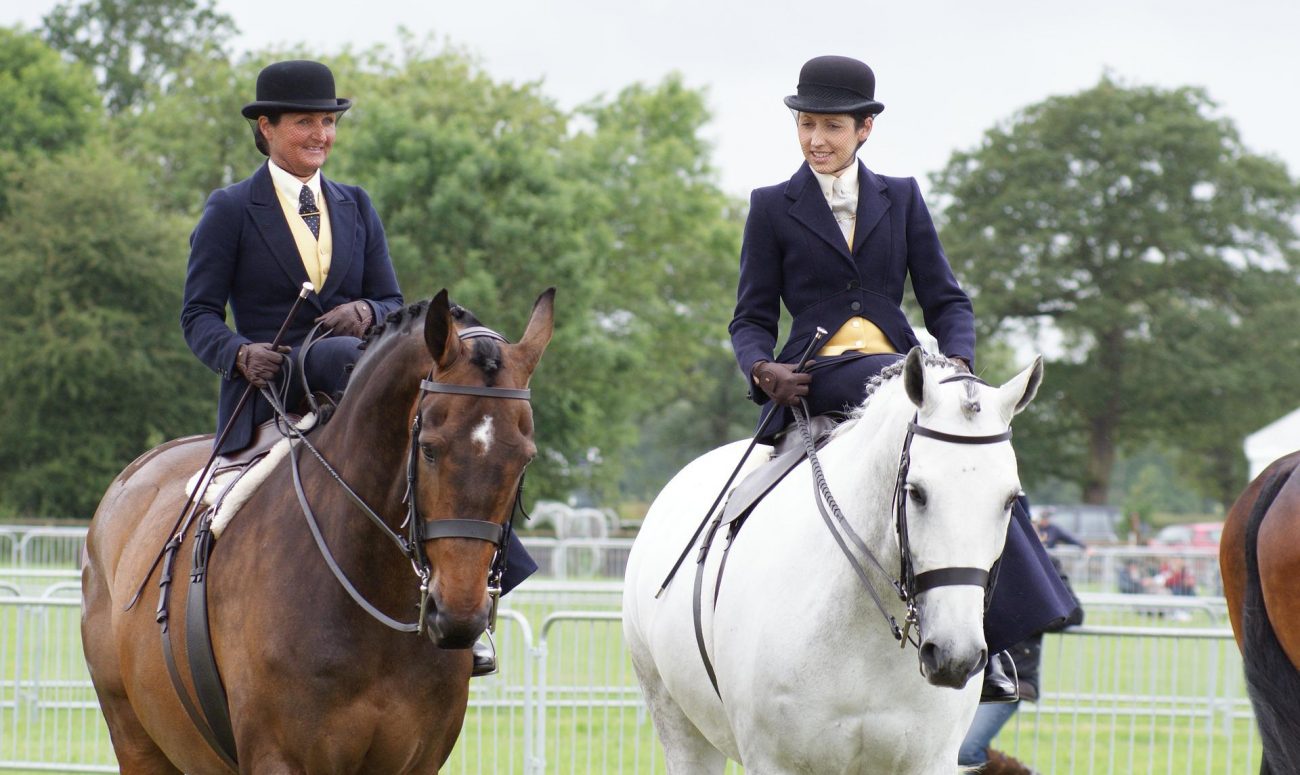Sitting aside on a horse dates back to the Middle Ages and even the Ancient World. The side saddle allowed women to ride in a more elegant manner, with her knees together. It has also been used for heavy equipment mounted on one side of the horse.
Originally used by noble women
Traditionally, a side saddle was a chair-like style for a rider to sit on, with a footrest at the front. These types of saddles were used from the 1300s to 1900s, when they evolved into modern-day saddles.
Until the late 1800s, only men were allowed to ride horses, and only the nobles rode. The reason for this was social and political conventions. Feudalism and patriarchal politics were a significant part of this tradition, which dictated the roles of women and what they could or could not do. Women also had to maintain the appearance of chastity and be as modest as possible.
The side saddle has a rich history. The earliest side saddles were usually built onto a man’s astride saddle. A man would lead the lady, either on foot or astride another horse. However, this would have been uncomfortable for a lady to ride at a faster pace and extremely difficult to control her horse.
Preserved female modesty
In the medieval times, riding a horse by women was considered impolite, but a side saddle offered a solution to this problem. Sitting on a side saddle preserved lady’s modesty, even while she rode. Through the centuries, the side saddle evolved to become safer and more comfortable to use. Today, women still use this traditional form of horseback riding.
When a woman rode a horse, she would usually place her right leg over the saddle’s pommel. However, this was both impractical and dangerous. If she were to fall, the horse could drag her and kill her. Riding with a long skirt had many limitations, and women had little control of their horses. The side saddle aimed to address these shortcomings and gave women more confidence to ride.

In medieval times, women used to sit behind men on horseback. They would hold on to their riders’ waists and sit on a small padded seat. Long skirts made it impossible to ride astride. As a result, riding side saddle preserved a woman’s modesty. The side saddle was also more convenient for women. As women gained more knowledge about riding side saddles, the style became more advanced and safer, and by the eighteenth century, the side saddle had a lower cantle and a wider seat.
In the 19th century, the development of the side saddle was linked with the rise of female liberty. Women were given the choice to ride astride or in a side saddle, and they opted for the latter. Aside from the increased safety, the side saddle also posed a danger to women. In 1903, Alice Hayes, an equestrian riding guide, wrote about it in her guide. A side saddle apron, a skirt-like garment that had a gap in the back, was developed.
The 1830s
The design was based on the traditional side saddle, but it had an important innovation at that time: the leaping head. The leaping head allowed women to ride with greater security and stability than ever before, and also enabled them to participate in hunts and to jump tall fences. Developed to allow women to ride horses, the side saddle was a popular accessory in the Victorian era.
While a sidesaddle allowed women to ride, it soon fell out of favor. In the late 1800s, women began to wear trousers while riding, but the side saddle did not go away completely. In fact, it was still used by women in ceremonial rides, such as Queen Elizabeth. But many female writers questioned the comfort and safety of the sidesaddle. For instance, Victorian horsewoman Alice Hayes argued that the saddle was a barrier between the rider and her mount.
Improved safety
Historically, women riding side saddles would place their right leg over the pommel of the saddle, allowing them to have more stability and control. The advent of a second pommel in a side saddle was considered revolutionary and radically improved the safety and freedom of female riders. Women could jump fences and gallop with the assistance of a side saddle. The safety and security of side saddle riders was greatly improved.
The 21st century
The side saddle has recently found a place in the 21st century outside of horse races. This unique style of riding is exactly what it sounds like. You sit sideways on the horse with one of your legs in the stirrup and the other on the pommel. While the traditional sidesaddle constitutes a traditional style of riding, some women even have started incorporating it into their horse racing routines.
